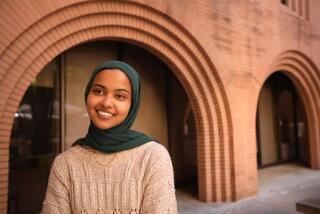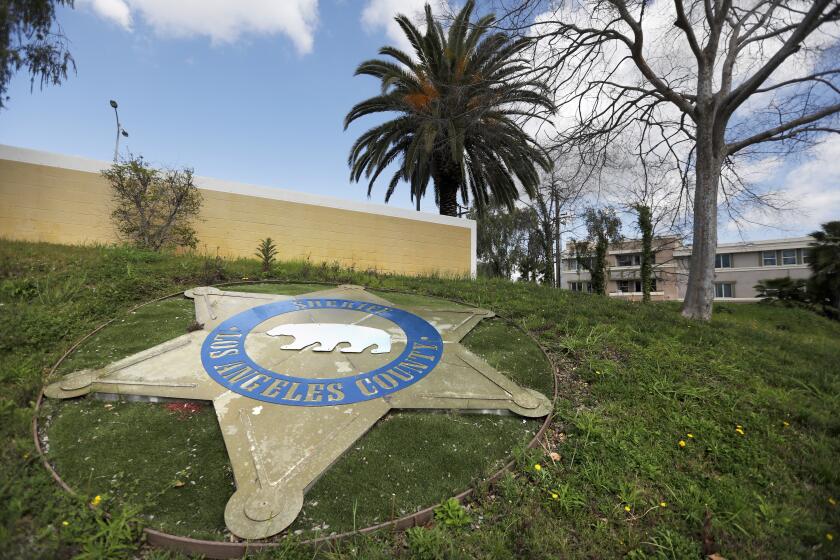We only burned ourselves, baby
FORTY YEARS AGO this week, Watts and other parts of South Los Angeles exploded in an orgy of burning and looting. The nihilism that emerged from the embers poses the greatest threat to residents who live there today.
If you were black and poor and living in the riot zone, there was much to be angry about in 1965: You were discriminated against by employers and landlords, your schools were lousy and the police treated you with disrespect if not abuse.
The riots, however, only made things worse. And since then the problems have metastasized -- in large part because the city’s black elite demanded massive government intervention, rather than shouldering responsibility for their community’s future.
Gov. Pat Brown’s McCone Commission examined the riot’s rubble (from a distance) and made predictable pronouncements. The formula became entrenched after the Kerner Commission, appointed by President Johnson, urged the federal government to pump more money into an array of social programs, including job training, Head Start and additional welfare entitlements.
The Nation of Islam was among the few community groups to call for black self-empowerment, expansion of an entrepreneurial spirit and moral uplift. Most of the city’s growing ranks of militants, however, clamored for revolution and “black power” but were quite willing to line up and receive funding from the various “poverty programs” sprouting throughout South L.A.
Leaders advocated something similar to the post-World War II Marshall Plan to lift Watts and other communities out of poverty, and they asked businesses to reinvest. But rioters had burned down the supermarkets, appliance stores, shoe shops, drugstores and clothing retailers that might have offered homegrown jobs. For two decades, outside corporations dragged their feet about investing in the devastated areas, then felt vindicated for their hesitancy when rioters again set fire to hundreds of businesses in 1992.
By then, successive generations of youths had become preoccupied with “getting over” -- and doing so by any means necessary. People came to casually assume that the government owed them. Depending on taxpayers’ money lost its shame. An underground economy blossomed. Criminal enterprises emerged. Street hustling became an accepted alternative to work.
How different would South Los Angeles look if black leaders had limited their reliance on government programs as the primary means of attempting to solve racial and community problems? What if white liberals could not so easily have assuaged their guilt by uncritically supporting the spending of public money on unproven programs? What if, instead, they had been forced to engage in honest self-criticism and principled critiques of what black people and black leaders in South Los Angeles were doing or failing to do.
Life in Watts, Willowbrook and the surrounding communities would be better today if leaders had focused on improving the quality of education in South L.A. schools, rather than on busing children to good schools outside the community. Instead, the depressing fact is that in 2005 black high school seniors’ math and reading levels on average are no higher than those of whites and Asians in the 8th grade.
South L.A. would be a better place if, instead of blaming cops for every arrest, residents had helped root out gangs and criminals. Instead, 40 years after the Watts riots, a disproportionate number of the city’s homicides occur within the 77th Street, Southwest and Newton divisions. For five straight years, about 40% of L.A.’s homicides have involved black victims, the vast majority killed by other blacks.
The former riot zones would be better places to work if leaders had encouraged their neighbors to start businesses and worked harder to provide a friendly environment that invited outside corporations to invest. Instead, residents of South L.A. neighborhoods still have to drive long distances for banking services and other essentials.
Remarkably, however, some leaders and residents of these communities remain hobbled by the belief that race relations remain such a tangle of exploitation and repression that, until that problem is solved, little else can be accomplished. Some are so convinced of this myth that they appear ready to lead the community off a cliff -- with their eyebrow-raising efforts, for instance, to defend Martin Luther King/Drew Medical Center.
The challenge now is to develop new leadership that is prepared to look beyond the usual orthodox -- failed -- framework.
Here’s what’s heartening: At least a few young, black residents now see “traditional” leaders as irrelevant, and the nihilism of “getting over” as a stupid way to live.
More to Read
Start your day right
Sign up for Essential California for news, features and recommendations from the L.A. Times and beyond in your inbox six days a week.
You may occasionally receive promotional content from the Los Angeles Times.






